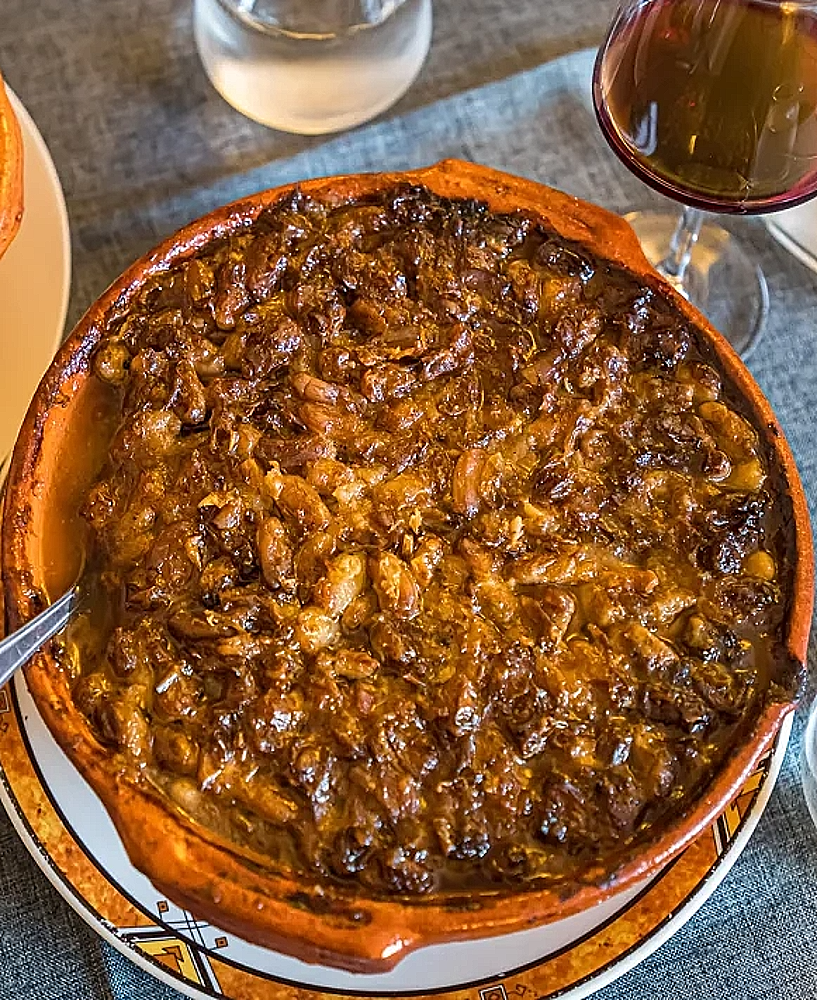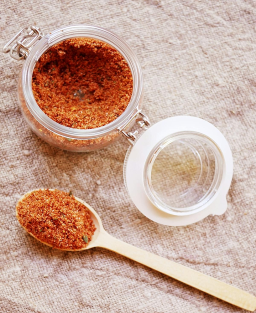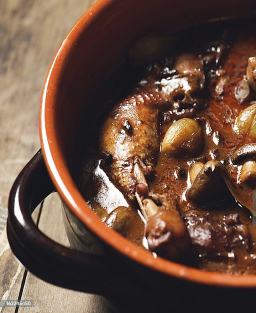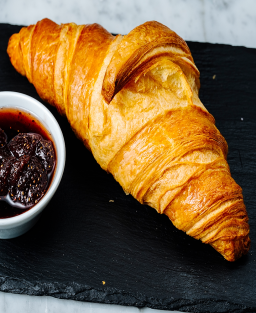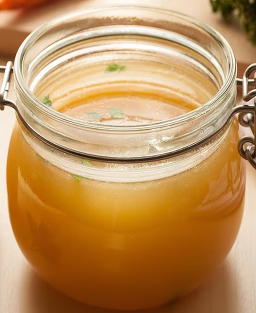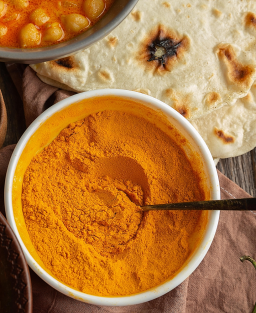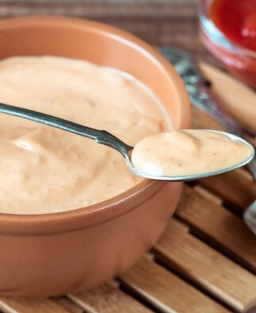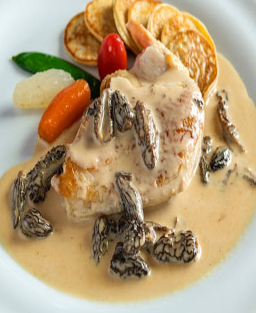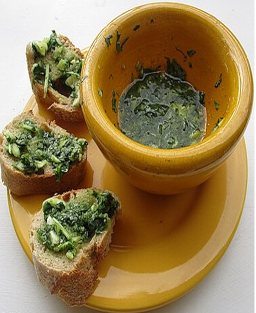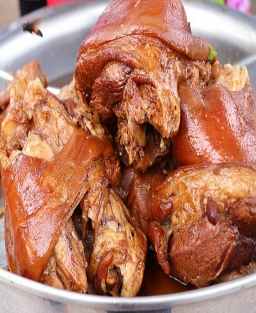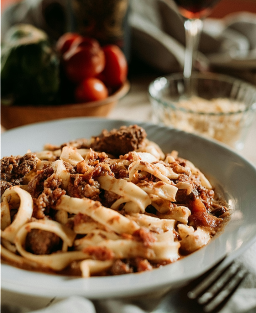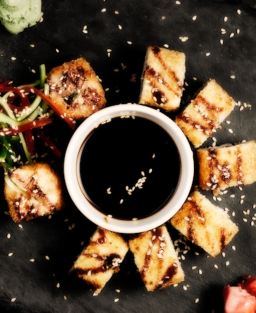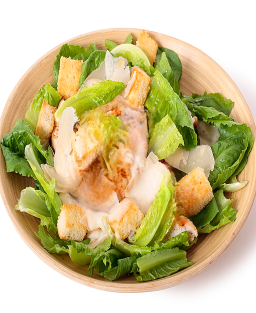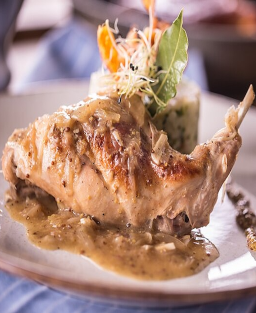- Out-of-Stock
Recipe from the Confraternity of Toulouse Cassoulet — traditional “Moustache” style
Toulouse Cassoulet Old-Style – Traditional Recipe Codified by the Confraternity of the Toulouse Cassoulet
Discover the traditional Toulouse Cassoulet old-style recipe, codified by the Confraternity of the Toulouse Cassoulet, with Tarbais beans, duck confit, pork pieces, and Toulouse sausages, slow-cooked in the oven with a golden crust.
Oven programming table UNOX, Rational, domestic
Country / Region
-
Country: France
-
Region: Occitanie, Toulouse
-
Specifications: Yes
o Tarbais Label Rouge beans mandatory
o Presence of Toulouse sausage
o Slow oven cooking, golden crust regularly pressed
o Combination of confit meats and pork pieces
o Respect for layers: beans / meats / beans / sausages -
Certification body: Confraternity of the Toulouse Cassoulet
History
Cassoulet is an ancestral traditional dish from Toulouse, originating from peasant practices and local terroir cuisine. Over time, the recipe evolved with the addition of duck legs confit and Toulouse sausage, while retaining its long, slow cooking, a true mark of its authenticity.
On April 7, 2022, Guy Pressenda played a central role in creating the Confraternity of the Toulouse Cassoulet, launched at the restaurant Chez Moustache in Beauzelle. He became its president, while chef André Audouy, known as “Moustache,” was named Grand Master, and Sophie Conquet, head of works at the vocational high school Renée Bonnet, was appointed Grand Mistress.
This initiative aimed to give Toulouse official recognition for its cassoulet, distinct from those of Castelnaudary and Carcassonne. The confraternity highlighted key ingredients: Lauragais lingot beans, duck confit, Toulouse sausage, fatty bacon, carrots, onions, and Cadours purple garlic.
Recipe evolution
-
Gradual addition of duck confit.
-
Standardization of artisanal Toulouse sausage.
-
Slow oven cooking to achieve a golden, tender crust.
-
Strict respect of layer order during preparation.
-
Emphasis on local ingredients.
Emblematic chefs and contributions
-
Chef Guy Pressenda: creation of the Confraternity of the Toulouse Cassoulet, strict codification of modern Toulouse cassoulet.
-
Chef André Audouy “Moustache”: transmission of traditional techniques, emphasis on local ingredients (Tarbais beans, duck confit).
-
Sophie Conquet: teaching and promotion of the recipe in schools and professional culinary training.
-
Chef Alain Dutournier: gastronomic promotion of cassoulet in French haute cuisine, influence on codifying contemporary recipes.
-
Chef Michel Trama: modern, refined adaptation of cassoulet, respect for terroir, balanced flavors.
-
Chef Jean-Pierre Xiradakis: promotion of Southwest French cuisine and Tarbais beans.
Legend or anecdote
According to tradition, the cassoulet crust had to be “pressed” by diners to show their enthusiasm for the dish.
Recipe description
Generous cassoulet combining Tarbais beans, duck confit, pork pieces, and Toulouse sausages.
Special feature: slow oven cooking to achieve a golden crust with tender interior.
Major differences between regional cassoulets
| Castelnaudary Cassoulet | Toulouse Cassoulet | Carcassonne Cassoulet |
|---|---|---|
| Most traditional and rich, with varied pork, sometimes lamb, occasionally tomato paste. | Lighter, without tomato or lamb, with duck confit, Toulouse sausage, local beans. | Intermediate, sometimes with lamb, more flexible recipe. |
Note: Tarbes is near Toulouse, with a local Pyrenean accent, especially thanks to Tarbais beans.
Confraternity recipes: essential requirements
Confraternity of Castelnaudary
-
Lauragais lingot beans
-
Farm pork (shank, rind), pork sausage, goose or duck confit
-
Slow cooking in a clay cassole, crust broken several times
-
Possibility of tomato paste
Confraternity of Toulouse
-
Lauragais lingot or Tarbais beans (Label Rouge)
-
Farm duck confit, artisanal Toulouse sausage, Gascon or Basque pork
-
No tomato paste, lamb, or breadcrumbs
-
Local aromatics: Cadours garlic, red onions from Toulouges, lemon thyme
-
Slow cooking in cassole, light broth, strict respect for terroir
Confraternity of Carcassonne
-
Tarbais or lingot beans, sometimes lamb
-
Confits, local sausage
-
More flexible recipe, according to family traditions
Local and strict recommendations – Toulouse Cassoulet Old-Style
Beans
-
Variety: Tarbais Label Rouge beans mandatory
-
Origin: Hautes-Pyrénées (Tarbes valley) exclusively
-
Quality: whole grains, not split, tender but maintaining shape
-
Note: Lauragais lingots allowed but less typical of Toulouse terroir
Meats
-
Farm duck confit
o Origin: Southwest France farms (Toulouse, Gers, Lot)
o Cooking: slowly in its fat, tender meat, slightly golden skin
o Quantity: 1 leg per portion recommended -
Pork pieces (shank, shoulder, belly)
o Origin: Gascon or Basque pork, farm-raised, free-range
o Preparation: cut into ~50 g pieces, browned before assembly -
Pork rind
o Origin: same farms as main pork
o Use: protect cassole bottom, aroma and natural fat for slow cooking -
Pig’s foot
o Origin: local farm, cleaned and blanched
o Contribution: natural gelatin, deep flavor to broth -
Artisanal Toulouse sausage
o Origin: local artisanal production, Gascon or Basque pork
o Characteristics: firm texture, mild, slightly spiced, no artificial nitrites -
Diced Lacaune ham
o Origin: Aveyron, traditional maturation
o Use: enhance umami of broth
Fats and oils
-
Goose fat
o Origin: Southwest, local farms
o Use: sauté aromatics and meats, add richness and creaminess -
Fatty bacon
o Origin: same farm as main pork
o Use: for assembly and slow cooking, adds flavor and moisture to beans
Aromatics and vegetables
-
Cadours purple garlic
o Origin: Haute-Garonne
o Use: subtle aroma, added whole or crushed -
Red onions from Toulouse / Toulouges
o Origin: local market gardening
o Characteristics: tender, mild taste, slightly reddish color -
Carrots and celery
o Origin: local farming, organic or sustainable if possible
o Preparation: carrots in regular slices, celery in pieces for even cooking -
Herbs
o Lemon thyme, bay leaf, possibly flat-leaf parsley
o Use: added to broth and layers for flavor without masking meat and beans
Broth
-
Homemade aromatic liquid
o Composed of pork bones, local poultry carcass, aromatics, and vegetables
o Light salting: adjusted only at the end to preserve natural flavors
o Temperature: gentle simmer to extract flavors without breaking beans
Codification rules
-
No tomato paste or breadcrumbs
-
Strict respect for layer order: beans / meats / beans / sausages
-
Exclusive use of local or traditional Toulouse terroir ingredients
-
Golden crust pressed regularly to moisten and infuse beans with broth
Ingredients
| Ingredient | Quantity | Approx. weight (g) |
|---|---|---|
| Dried white Tarbais Label Rouge beans | 500 g | 500 |
| Duck confit legs | 4 pieces | ~800 |
| Farm pork ribs | 300 g | 300 |
| Pig’s foot | 1 | 700–800 |
| Pork rind | 250 g | 250 |
| Toulouse sausage | 500 g | 500 |
| Pork pieces (shank, shoulder, belly) | 4 x 50 g | 200 |
| Diced Lacaune ham | 150 g | 150 |
| Carrot | 1 | 100 |
| Onions | 2 | 150 |
| Celery stalk | 1 | 50 |
| Goose fat | 3 tsp | 15 |
| Bay leaf | 1 | 1 |
| Thyme sprig | 1 | 1 |
| Poultry broth | 1 L | 1000 |
| Poultry carcass or pork bone | 1 | 500 |
| Crushed garlic cloves | 4 | 12 |
| Salt and pepper | To taste | - |
Note: Some ingredients may vary (e.g., smoked or natural bacon). The original recipe requires Tarbais beans and Toulouse sausage.
Detailed preparation
The day before: Soaking the beans
-
Sort the beans: remove damaged or too small grains.
-
Place beans in a large bowl and cover with cold water. Let soak 12–16 h.
Initial cooking of the beans
-
Drain and rinse beans.
-
Place in a large pot with three times their volume of cold water.
-
Bring to a boil for 5 min, then drain.
-
Reserve beans for cooking in the broth.
Preparation of aromatic broth
-
Heat 3 tsp of goose fat in a pot. Add onions and ham cubes, sauté 5 min.
-
Add meats and bones: poultry carcass, pork bones, pig’s foot, rinds (half for assembly).
-
Add vegetables and aromatics: carrot, celery, bay leaf, thyme.
-
Add 1 L broth, salt, pepper, simmer 1 h, skimming.
-
Strain broth and reserve rinds.
Cooking the beans in the broth
-
Place pre-cooked beans in strained broth.
-
Cook gently 1 h, stirring every 20 min.
Preparation of meats
-
Cut pork into regular pieces (~50 g).
-
Sear pieces in a little goose fat, reserve.
-
Prick and brown Toulouse sausages.
-
Degrease and prepare duck confit legs.
Assembling the cassoulet
-
Place rind strips at the bottom.
-
Spread 1/3 of beans.
-
Add pork pieces and duck legs.
-
Add remaining beans.
-
Press the sausages.
-
Pour hot broth to cover, season, add 1 tbsp goose fat.
-
No breadcrumbs according to codification.
Oven cooking
-
Preheated oven: 150–160 °C
-
Cooking: 2–3 h, press crust every 30–40 min
-
Add broth if surface dries
-
Reheating: 1 h 30 at 150 °C if prepared in advance
Oven programming table
| Item | UNOX (CHEFTOP / BAKERLUX) | RATIONAL (iCombi Pro / SelfCookingCenter) | Standard oven |
|---|---|---|---|
| Program name | Manual / Multi-step | Manual / “My Programs” | Manual |
| Cooking mode | Gentle convection | Dry heat + light steam (10–15 %) | Static or fan-assisted heat |
| Temperature | 150–160 °C | 150–160 °C | 150–160 °C |
| Ventilation / Air Flow | Speed 1–2 (low) | Automatic | No forced airflow |
| Humidity / Steam | 0 % or low | 10–15 % steam, then 0 % | No steam |
| Cooking time | 2–3 h | 2–3 h | 2–3 h |
| Core probe | Optional 85 °C | Optional 85 °C | Not available |
| Rest after cooking | 10–15 min out of oven | 10–15 min out of oven | 10–15 min out of oven |
| Specific notes | Monitor color, press crust | Use light steam, finish without steam, press crust | Place rack in center, press crust |
Precise UNOX and Rational programming available via USB or download on request.
Versions / Regional variations
-
Traditional / strict version
-
Escoffier / classic version
-
Modern / revisited version
Tips and advice
-
Press crust regularly so beans soak up the broth
-
Add a little hot broth if needed
-
Respect layer order
-
Never add breadcrumbs
-
Choose a clay dish for even cooking
Resting and serving
-
Rest: 10–15 min before serving
-
Serve hot directly in the cassole, without mixing
-
Pair with Southwest red wine (Fronton, Cahors, Madiran)
Tips for beginners
-
Do not salt beans at the start
-
Use a cassole for even cooking and authentic taste
-
Prepare the day before for best flavor
-
Keep some hot broth during cooking
Recommended wines and drinks
-
Red wines: Cahors, Madiran, Fronton
-
Craft beers: local blonde or amber
-
Non-alcoholic: sparkling water or white grape juice
Nutritional information (per 1/6 cassole)
-
Energy: 450–500 kcal (~1880–2100 kJ)
-
Fat: 30–35 g
-
Carbohydrates: 25–30 g
-
Protein: 35–40 g
-
Fiber: 6–8 g
-
Allergens: None major, possible traces of sulfites
-
Adaptations: Naturally gluten-free, vegetarian possible
Glossary
-
Cassole: Traditional clay dish
-
Confit: Meat slowly cooked in its fat
-
Tarbais beans: Label Rouge white beans, thin skin, tender
-
Crust: Golden surface naturally formed during slow cooking
-
Aromatic broth: Liquid flavored with bones, carcasses, vegetables, and aromatics











